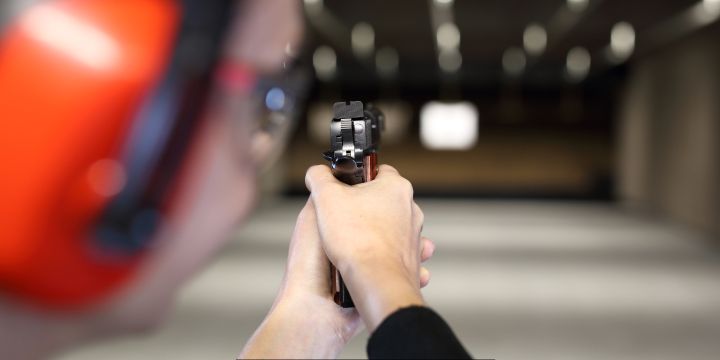
How to Select the Perfect Competition Glock Sights for Your Shooting Style
In the world of competitive shooting, success is built on a foundation of precision, speed, and confidence—none of which can be fully realized without the right equipment. Among all the gear a shooter uses, sights often play a more critical role than one might expect. Whether you’re navigating a rapid-fire stage or lining up a long-range steel target, your ability to acquire and align your sight picture directly affects your performance. That’s why taking the time to understand and select the right competition glock sights is more than just a gear decision—it’s a performance strategy.
Why Choosing the Right Sights Matters in Competition Shooting
For competitive shooters, every detail matters—from your stance to your grip, and perhaps most importantly, your sight picture. Selecting the right sights can significantly impact overall performance, accuracy, and confidence on match day. When fractions of a second mean the difference between a victory and a near-miss, your sights must perform flawlessly. Many competitors notice that sight choice heavily influences their shot-to-shot consistency, and even subtle changes can yield significant improvements in either speed or precision. Selecting sights that align perfectly with your eye, hand, and shooting preferences ensures you can quickly acquire and transition between targets, giving you a real edge.
Competitive shooting events often test a shooter’s ability in various lighting conditions, under significant time pressure, and in situations where target engagement angles shift rapidly. In these scenarios, relying on basic or generic factory sights can handicap your performance. That’s where a thoughtful upgrade to competition glock sights helps. These sights are designed to address real match challenges—enhanced clarity, improved durability, and faster alignment. When sights complement your technique, your focus sharpens, and your natural reflexes take over more effectively, letting your training shine through.
Key Types of Competition Glock Sights
There’s no shortage of aftermarket Glock sight options, each built with specific strengths for match conditions. Fiber optic sights use thin rods that gather ambient light, creating a brightly colored dot—typically red or green—at the front of your sight picture. This intense brightness makes them a go-to for outdoor competitions, where quick acquisition and high visibility in sunlight or partial shade are crucial for rapid response. Night sights, on the other hand, offer a glow through tritium or other luminescent materials, making them ideal for matches running later in the day or inside indoor ranges where lighting is unpredictable. Both types shine in their contexts, but their strengths and weaknesses can sharply divide opinions among top shooters.
When exploring sight upgrades, it’s also essential to match your setup to your Glock’s frame size, something the USCCA explains in detail when comparing the various Glock pistol frame sizes. Adjustable sights are another popular option. Featuring screws or dials for windage and elevation, these sights are indispensable for competitors who frequently change ammo brands or shift between distances. Whether you are precision shooting at 25 yards or knocking down steel targets at varying ranges, adjustability provides the control needed to dial in a perfect point of impact for every challenge. Fixed sights, although sometimes overlooked, offer rugged dependability through their simplicity. Many “run and gun” competitors appreciate fewer moving parts and the confidence that these sights won’t lose zero if knocked or handled roughly. Regardless of your preference, each type warrants consideration as you seek the ideal combination for your shooting style.
Identifying Your Personal Shooting Style
Every competitor has a unique rhythm and focus. Some excel in dynamic matches with multiple close targets, while others thrive in static precision events demanding pinpoint aiming. An honest assessment of your shooting habits is the first step in narrowing your sight options. If your matches often feature arrays of targets that require split-second transitions, you may benefit from a sight setup with a wide rear notch and brightly colored front post. This combination enables rapid alignment without compromising accuracy too much. On the other hand, if your priorities lean toward long-distance engagements, a thinner front sight post and a tighter rear notch can improve your ability to stack precise shots and minimize visual clutter.
As you explore different sighting systems, it’s also crucial to keep safety top of mind—resources like the NSSF’s Firearm Safety Rules serve as a valuable foundation no matter how advanced your shooting goals become. For those who compete in all-around matches that combine speed and technical challenges, hybrid sights that offer both visibility and subtlety are key. Reviewing video footage or analyzing performance records from recent matches can reveal patterns. Notice whether you hesitate lining up your first shot, or lose time re-aligning after recoil, which a different sight profile might address. This self-analysis leads to informed choices rather than guesswork, and anchors your gear selection in real, lived experience.
Factors to Consider When Selecting Glock Sights
Beyond sight style, several characteristics set incredible sights apart from good ones. Visibility, for instance, can’t be overstated—a larger, high-contrast front sight allows the eye to center and focus faster, especially under the pressure of a shot timer. Shooters who compete at dusk or in varying light conditions should prioritize tritium or luminescent features to maintain optimal performance, regardless of the conditions. Adjustability is a game-changer in disciplines where loads and distances fluctuate, giving you the ability to fine-tune sight height and windage for each scenario. A bullet’s point of impact can shift up to several inches at 25 yards with a change in ammunition, reinforcing the value of being able to recalibrate quickly.
Durability is worth special mention—stainless or coated steel sights are better equipped to endure heavy match use, regular holstering, and travel-induced bumps. Sight profile plays a functional role too: low-profile sights reduce snagging during fast draws and holstering. At the same time, taller or serrated options allow a shooter easier access to a clean sight picture when coming up on target quickly. Competitive shooting statistics suggest that more than 60% of high-level shooters upgrade their factory sights within their first season, often reporting enhanced confidence and, in many cases, better match results. Thoughtful attention to each of these factors will help ensure that your selected sights fit both your pistol and your goals.
Tips for Testing and Installing Your Sights
- Safety should always take precedence during installation—ensure the firearm is clear and unloaded before making any changes. When in doubt, a professional gunsmith or a specialized sight pusher tool guarantees optimal fit and alignment.
- After installation, invest time in dry-fire drills. This allows you to get a feel for the new sight picture, confirm alignment, and catch any issues, such as canted or loose sights, before ever sending a round downrange.
- At the live range, methodically zero your sights. Many shooters maintain a sight adjustment journal, logging shot group data and environmental details to create a reference for future tweaks.
- Practice both slow-fire precision and rapid splits between targets. This combination helps reveal if the sights function equally well in all match scenarios, or if further adjustments could boost your performance.
These steps not only ensure the physical reliability of your gear but foster familiarity, making each sight picture and trigger press more intuitive under pressure.
Common Mistakes to Avoid When Choosing Sights
- Overlooking personal vision needs is a standard error—a sight that appears clear to one shooter can seem blurry or faint to another. Test several options when possible, and consider colored inserts or anti-glare features that best suit your eyes.
- Choosing the brightest sight isn’t always the best strategy. An overwhelmingly bright sight may cause distraction or obscure fine sight alignment, especially in challenging light.
- Skipping live-fire validation is risky. Dry fire confirms fit, but only range work reveals if your sights maintain zero and offer repeatable results under speed and recoil.
- Selecting incompatible sight heights can cause accuracy issues and compromise holster retention. Always double-check compatibility with existing gear.
Try to balance innovation with proven fundamentals—steady refinement leads to lasting improvement.
Frequently Asked Questions About Competition Glock Sights
How do I know if I need adjustable sights?
If you compete in disciplines requiring frequent changes in ammunition or shooting distance, or need to fine-tune for different match stages, adjustable sights are nearly indispensable. They let you adapt quickly, rather than battling frustration when your shots land off-center.
Are brighter sights always better in matches?
Not in every situation. While a bright sight helps draw your focus rapidly, too much brightness can be counterproductive. Match your sight’s brightness to your environment and vision so that it’s visible enough for fast acquisition but not so intense that it becomes a focal point instead of the target itself.
How often should I check or replace my sights?
Regular inspection is key, especially before major matches or when traveling. Clean your sights, check for chips or looseness, and ensure they’re still zeroed to your preferred load. High-quality competition sights will last for years, but regular attention ensures the best possible performance anytime the pressure is on.



